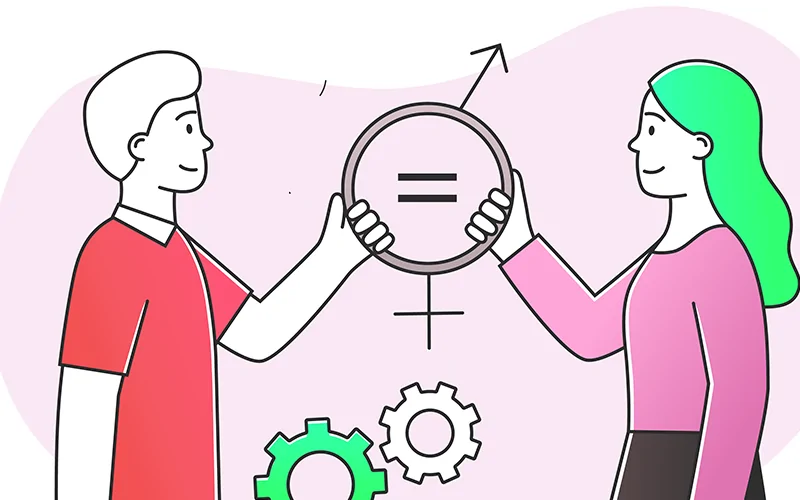Discuss the Victor Vroom’s expectancy theory and its implication processes.
Victor Vroom the psychologist one of the leaders in advancing and explaining expectancy theory. He holds that people will be motivated to do things to reach a goal if they believe in the worth of that goal and if they can see that what they do will help them in achieving it.
In a sense, this is a modern expression of what Martin Luther observed centuries ago when he said, “Everything that is done in the world is done in hope.” Vroom’s theory is that people’s motivation toward doing anything will be determined by the value they place on the confidence they have that their efforts will materially aid in achieving a goal.
In other words, Vroom makes the point that motivation is a product of the anticipated worth that an individual places on a goal and the chance he or she sees of achieving that goal. Vroom’s model is built around the concept of valence, expectancy and force. Its basic assumption is that the choice made by a person among alternative courses of action is lawfully related to psychological events occurring contemporaneously with the behaviour. Vroom’s concept of force is equivalent to motivation and is again equivalent to the product of valence and expectancy. In his own terms Vroom’s theory may be stated as
Force = Valency x Expectancy.
Valency.
Valency means degree of desirability or preferences for various outcomes or incentives which are available to him. These include value, incentive, attitude and expected utility.
Before, an individual decides to perform a task, he first looks at the various outcomes associated with it. Hence valency reflected the strength of a person’s desires for the attraction to rewards, if he adopts a particular cause of action. In other words valency is the strength of an individual’s desire for a particular outcome and it is the subjective value attached to an incentive or reward. It is just like promotion. An individual gets promotion in the organization if his performance is superior to others.
Thus the first level outcome is superior and the second level outcome is promotion. The superior performance is instrumental in obtaining promotion. According to Vroom an individual would be motivated to give superior performance in order to get promoted.
Expectancy.
Expectancy is the same as the instrumentality input into valence, but they are different Expectancy differs from instrumentality because it is the first level outcome and instrumentality is the second level outcome.
Since expectancy is rated, as the probability of connection between effort and performance, its value ranges between 0 and 1. If an individual have no chance to achieve the desired performance level, the expectancy is 0. On the other hand if he is confident that the task will be completed and he will achieve the desired performance level, the expectancy value assigned is 1.
Thus, the expectancy of an individual will lie between these two extremes, i.e. 0 to 1. Hence motivation of people depend upon the high expectancy like valence.
And Expectancy = Efforts to First Level Outcomes.
Instrumentality.
Instrumentality is the outcome of individuals for each level of job performance. It refers to the person’s perception of the relationship between high performance and promotion. This perceived instrumentality is a subjective feeling, if an individual perceives that his performance is suitably rewarded the perceived instrumentality will be positive. On the other hand, if he perceives that the performance will make no difference to the rewards the instrumentality will be low.
Implications of the Theory.
According to Vroom motivation is a complex process as compared to Maslow’s or Herzberg’s simplistic models. It clarifies the relationship between individual and organizational goal. Main features of Vroom’s theory is that is recognizes individual differences in work motivation However, Vroom’s theory is not empirically tested. It is complex and its validity cannot be fully tested.
Then are only a few research studies designed to test the theory. This theory is difficult to research and apply in practice. From a theoretical standpoint, the model seen to be a step in the right direction but it does not give the manager practical help involving motivation problems. There are so many technical and methodological problems to do research on the theory.
Valency cannot be measured on ratio scales, each valency is explain in the terms of all other valencies.
Overall.
Motivation is vital to all organizations Thus, managers need to understand the nature of individual motivation, especially as it applies to won situation. But motivation is not a simple concept instead, motivation pertains to various drives, desires, needs, wishes.
Managers motivate people by providing an environment that induces organization members to contribute. Regarding motivation different thinkers have gave their view. Out of them Vroom’s expectancy theory is one which is based on motivation process. This theory determine how individuals choose among alternative behaviors.
Vroom develops his motivation model around the concepts of value, expectancy and force. One of the important features of this theory is that it recognizes individual difference in work (motivation and suggests that motivation is a complex process as compared to Maslow’s on Herzberg’s simplistic models.
This theory is useful to managers in understanding the nature of motivation in work situation. Vroom’s models also help to understand the complexities of determining what motivates the employee to perform better. But it is inadequate to resolve the motivational problem independently. These theories only add to the understanding of those who are charged with the responsibility of motivating people.





